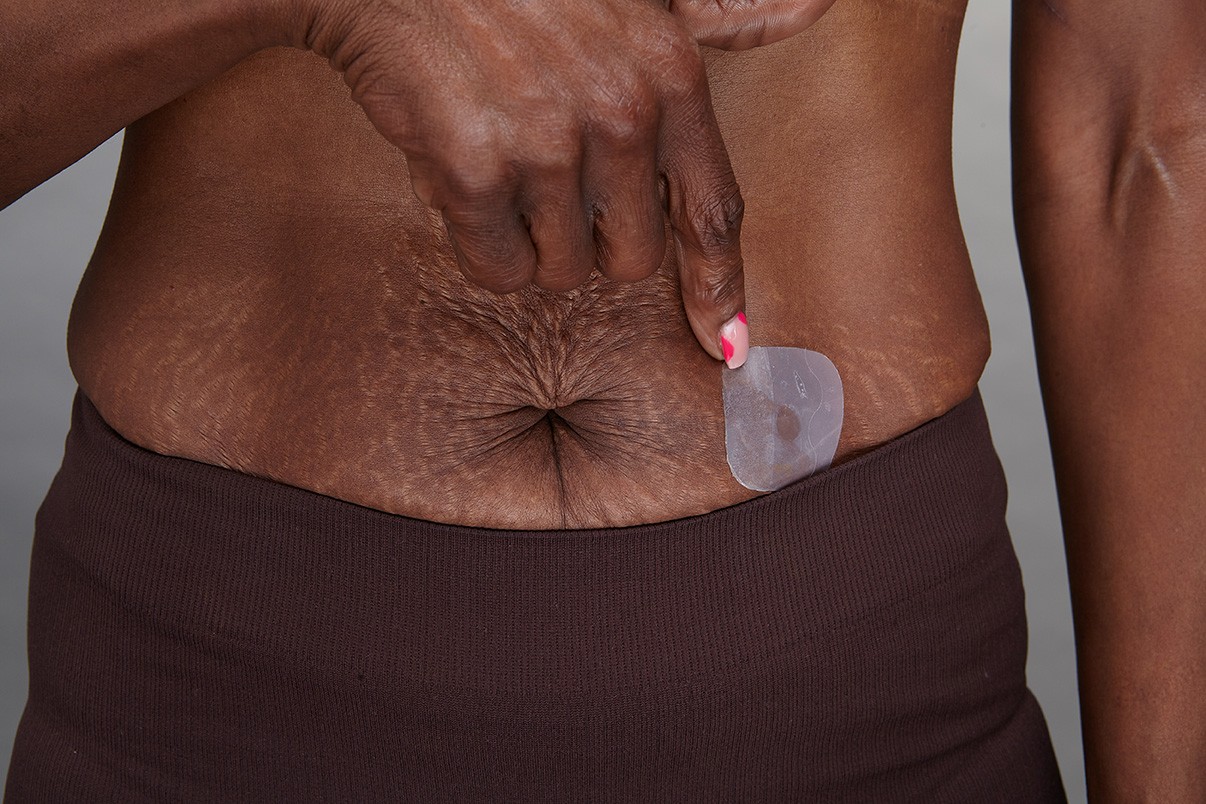Understanding Evorel Conti, FemSeven Conti, Everol Sequi and FemSeven Sequi for improving perimenopause and menopause symptoms
• Replacement estrogen and progesterone is first-line treatment for perimenopause and menopause to improve both symptoms and future health
• Combination patches contain both estradiol, a body identical estrogen, and a progestogen, a synthetic progesterone
• Understand the benefits and risk of combination patches
During perimenopause and menopause, estrogen and progesterone levels fluctuate and then decline, which can trigger symptoms as well as health risks. HRT is prescribed to relieve these symptoms - it works by replacing the estrogen and progesterone that is lost.
In the UK, women are usually prescribed estrogen, progesterone (and sometimes testosterone) separately - this allows the dose of each hormone to be adjusted to suit your individual needs. However, there are combination patches (and combination tablets) available, which contain both estrogen and progesterone.
Combination patches are a type of systemic HRT, which means when the sticky patch is applied to your skin, it releases the hormones directly into your bloodstream where they can travel through your entire body and relieve a wide range of symptoms. As well as reducing menopausal symptoms, taking HRT can reduce your future risk of diseases, including osteoporosis, diabetes, dementia and cardiovascular disease.
What types of combination patches are available?
Brands of combination patches include Evorel Conti, FemSeven Conti, Everol Sequi and FemSeven Sequi. Each one contains a fixed dose – 50mcg – of estradiol, which is the body identical type of estrogen. They also contain a type of synthetic progesterone, which is known as a progestogen.
Patches can either be taken continuously (with no break) or sequentially – this involves a treatment cycle where you apply patches containing just estradiol for the first phase and the patches containing both estradiol and progestogen for the second phase.
RELATED: Sequential and continuous HRT: what’s the difference?
Continuous combined patches
Evorel Conti contains 3.2mg estradiol and 11.2mg norethisterone (progestogen), and releases 50mcg estradiol and 170mcg norethisterone (progestogen) per 24 hours. Each patch is 16cm2 and a pack contains eight patches. The patches are usually changed twice a week.
FemSeven Conti contains 1.5mg estradiol and 0.525mg levonorgestrel (progestogen), and releases 50mcg estradiol and 7mcg levonorgestrel per 24 hours. Each patch is 15cm2 and a pack contains 12 patches. The patches are usually changed once each week.
Estradot Conti 30/95 contains 3.2mg estradiol and 16mg norethisterone (progestogen), and releases 30mcg estradiol and 95mcg norethisterone per 24 hours. Each patch is 6cm2 and comes in packs of 8 or 24 patches. The patches are usually changed twice a week.
Estradot Conti 40/130 contains 4.32mg estradiol and 21.6mg norethisterone (progestogen), and releases 40mcg estradiol and 130mcg norethisterone per 24 hours. Each patch is 7cm2 and comes in packs of 8 or 24 patches. The patches are usually changed twice a week.
Sequential combined patches
Everol Sequi contains two different types of patches: estradiol-only patches (Evorel 50 patches), and Evorel Conti patches containing both estradiol and norethisterone (progestogen).
FemSeven Sequi contains two different types of patches: estradiol-only patches, and combined estradiol and levonogestrel (progestogen) patches.
RELATED: HRT easy prescribing guide
What are the benefits of combination patches?
The only real advantage is that you do not need to take a tablet of micronised progesterone as well as using estradiol patches. If you are using the patches that only contain estradiol then you will need to take progesterone either orally or as a pessary, unless you have had a hysterectomy or have a Mirena coil in situ (or have been advised to take progesterone).
What are the disadvantages of combination patches?
There's less flexibility with combination preparations as you can't alter the amount of each hormone needed to relieve symptoms.
Newson Health’s research on absorption highlighted that some women need higher doses than others for adequate absorption through their skin [1].
The dose of estrogen is moderately low in combination patches. Some women may need to use more than one patch, while others may notice absorption varies according to where they place their patch.
Sometimes women use additional estrogen by using some estradiol gel or an estradiol-only patch.
In combination patches the progestogen part is not body identical. The synthetic progestogens are associated with small increased risks of blood clots, heart disease, stroke and breast cancer. They are often more likely to be associated with side effects such as skin changes, headaches, fluid retention and low mood.
Some women can find their patch doesn’t adhere well to their skin or can cause irritation – in these instances the hormones will not be absorbed as effectively so you should speak to your healthcare professional who may recommend a different brand or taking estrogen and progesterone separately.
RELATED: Estrogen in patches, gels or sprays
Can I expect any side effects?
It often takes a few months for your body to adjust to taking any HRT, so you may notice some mild side effects. The most common are breast discomfort, leg cramps, and breakthrough bleeding or spotting. These usually settle over time, but talk to your doctor if side effects persist for longer than the first six months.
If you notice sticky marks on your skin when you change a patch, these can be removed with baby oil and a dry flannel.
How do I use combination patches?
You should apply your patch to clean, dry skin below your waist. You can choose to stick it to your tummy, hip, bottom or thigh – wherever suits you best. You might notice some skin irritation when you remove a patch, so it’s a good idea to vary the location rather than apply it to the same place each time.
What else do I need to know?
Vaginal hormones, including estrogen and prasterone, can be taken – instead of or as well as – combination patches and can help alleviate symptoms associated with Genitourinary Syndrome of the Menopause (GSM), including vaginal dryness, discomfort or pain during sex, irritation or burning of the vulva or vagina, needing to go to the toilet more often and feeling very desperate to go, and urinary tract infections such as cystitis.
RELATED: Vaginal hormones: what you need to know
Resources
NHS: Continuous combined HRT tablets, capsules and patches
NICE: Estradiol with levonorgestrel
NICE: Estradiol with norethisterone















